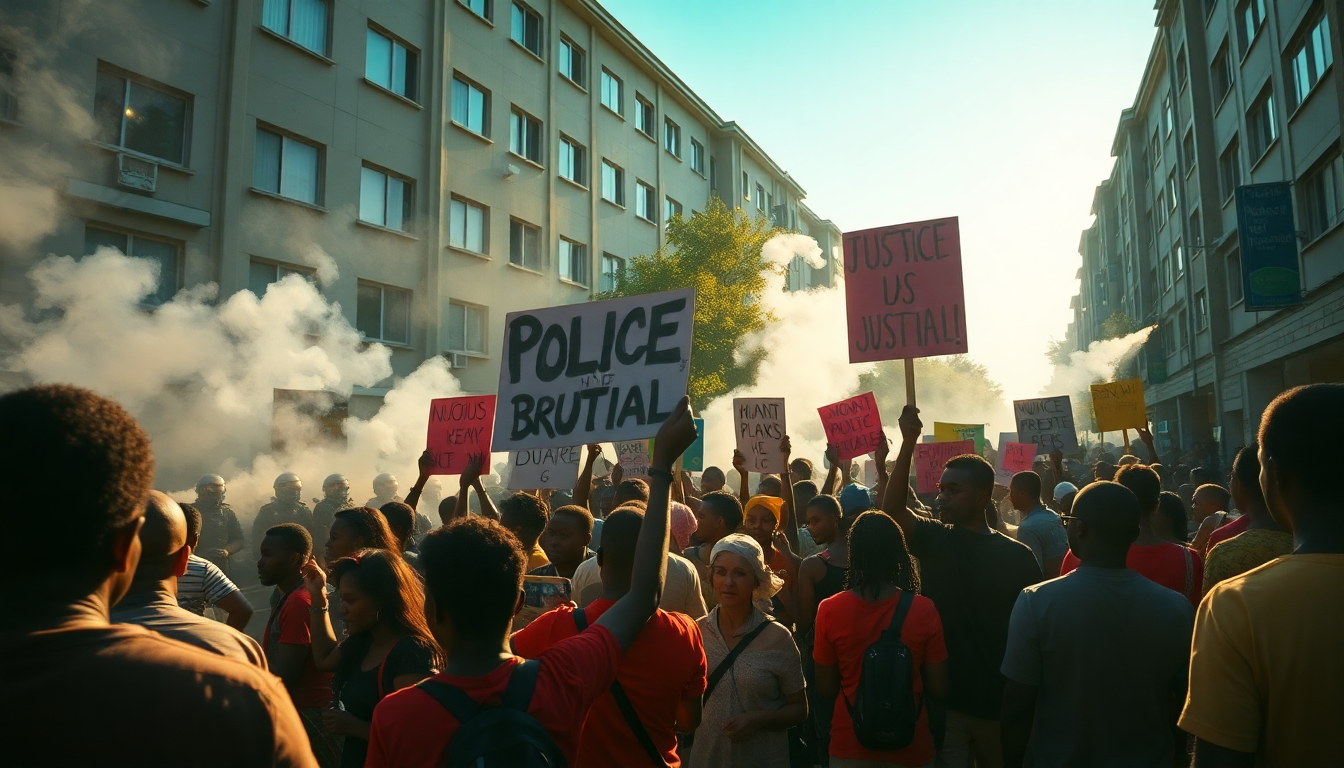Table of Contents
The recent wave of protests against police violence in Kenya has brought to light a troubling trend of unrest and public outcry, especially following the tragic death of 31-year-old Albert Ojwang while in custody. As demonstrations erupt in major cities, they reveal the escalating tensions between law enforcement and the communities they are supposed to protect.
The circumstances surrounding Ojwang’s death have sparked widespread anger and calls for accountability, raising important questions about police conduct and human rights in the nation.
The backdrop of unrest
So, who was Albert Ojwang? A teacher and blogger, he was arrested in Homa Bay for allegedly criticizing Deputy Police Chief Eliud Lagat.
His death shortly after his arrest has ignited outrage, especially after an autopsy revealed that his injuries were not self-inflicted, contradicting police claims. This incident is part of a larger narrative where human rights organizations report multiple fatalities resulting from police actions during protests tied to controversial legislation.
Just last year, over 60 people lost their lives during demonstrations against a financial bill proposing tax increases. Can you imagine the fear and frustration brewing in communities facing such violence?
The protests haven’t been limited to Homa Bay; they’ve also spread to urban centers like Nairobi and Mombasa.
Demonstrators are expressing their despair with slogans like “Stop killing us.” This growing unrest highlights a widespread belief among Kenyans that police brutality has become a significant threat to public safety and human rights. It’s a sentiment that resonates deeply—who among us hasn’t felt the need to stand up against injustice?
The violent response to protests
Unfortunately, the protests have been met with violence. In Nairobi, groups of men on motorbikes—allegedly armed and organized—have confronted peaceful demonstrators using intimidation tactics like beatings and whips. Eyewitness accounts reveal chaotic scenes where police appeared to stand by, allowing violence to unfold.
This contributes to a sense of lawlessness and impunity. Ndungi Githuku, a representative from the civil rights group Kongamano La Mapinduzi, has voiced grave concerns that Kenya is sliding into a state of lawlessness. Isn’t it alarming to think that those meant to protect citizens might be turning a blind eye?
These confrontations raise urgent questions about the safety of protesters and reflect deeper societal issues regarding the relationship between law enforcement and the communities they serve. Activists like Hanifa Adan have shared harrowing stories of being attacked, only to find that police intervention was lacking during these assaults, further fueling public anger and mistrust. How can trust be rebuilt in such a climate?
Government response and accountability measures
In the wake of these events, the Kenyan government is under mounting pressure to tackle police violence and ensure accountability. President William Ruto has publicly acknowledged that Ojwang’s death occurred “at the hands of the police,” calling it “heartbreaking and unacceptable.” His promise to protect citizens from rogue officers is a step in the right direction, but skepticism lingers regarding the effectiveness of these pledges, particularly given the more than 20 deaths in police custody reported in recent months. Are these promises enough to quell the outrage?
As investigations into Ojwang’s death continue, including arrests of several police officers linked to the case, the question of systemic change within the police force looms large. Many Kenyans are demanding comprehensive reforms to prevent further incidents of police violence and to rebuild trust between communities and law enforcement. What will it take for real change to happen?
In conclusion, the tragic events surrounding Albert Ojwang’s death have ignited a vital conversation about police violence in Kenya, exposing deep-seated issues that need urgent attention. The road ahead will require not only accountability for those responsible but also a broader commitment to reforming policing practices to safeguard human rights and ensure the safety of all citizens. Isn’t it time we prioritize justice and safety for everyone?





